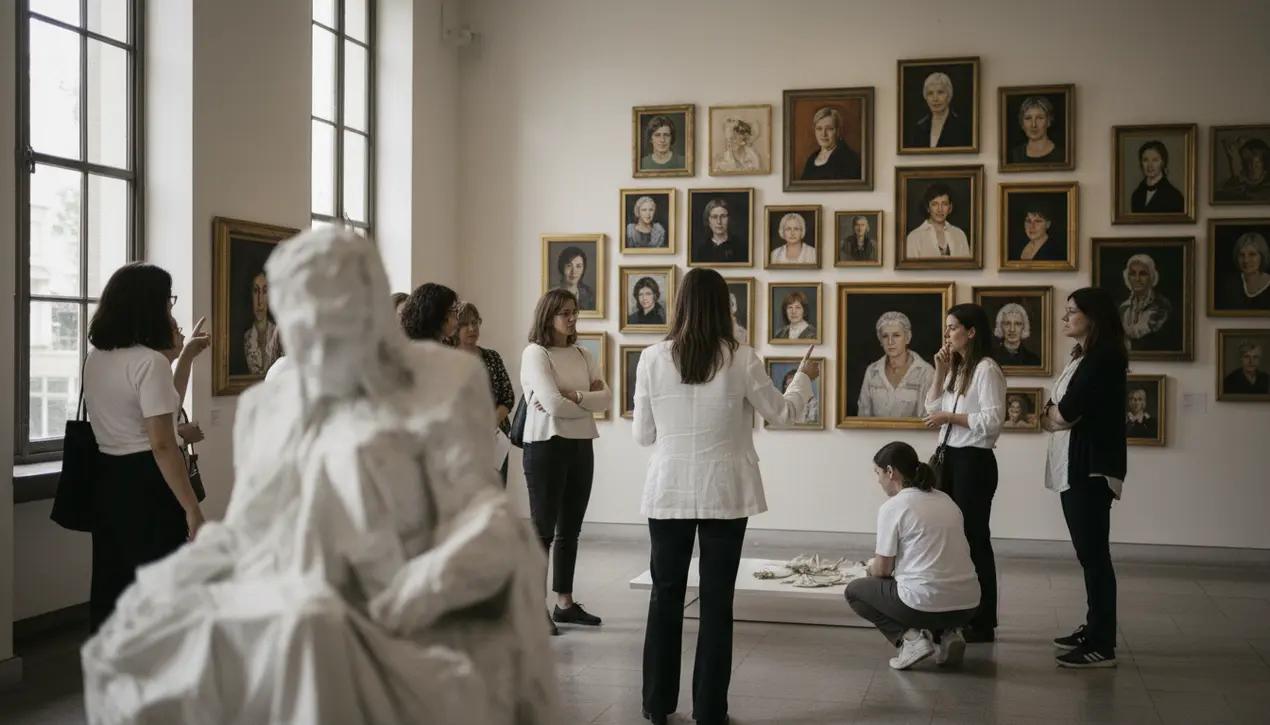
Entertainmenttheatre & artsArt Exhibitions
The Necessity of All-Woman Art Exhibitions.
AN
Anna Wright
3 hours ago7 min read5 comments
The question of whether we still need all-woman art exhibitions isn't merely a curatorial debate; it's a profound inquiry into the very structures of power, visibility, and historical redress that shape our cultural landscape. Alison M.Gingeras, an American curator and writer whose ambitious new project ambitiously stitches together a 500-year lineage of women artists, thrusts this conversation back into the spotlight, challenging the art world's complacent assumption that the battles of second-wave feminism have been won. For centuries, the art historical canon has been a meticulously guarded boys' club, with textbooks and museum wings overwhelmingly dedicated to male genius, while figures like Artemisia Gentileschi or Rosa Bonheur were relegated to footnotes.An all-woman show is not, as some critics lazily argue, a form of ghettoization; it is a radical act of historical correction, a deliberate and necessary space where the suppressed narratives of half of humanity can be heard without competing with the deafening echo of patriarchal acclaim. Think of it not as segregation, but as the essential, focused hearing in a courtroom where women have been denied the stand for generations.Gingeras’s project, in its vast chronological scope, does the critical work of creating a counter-canon, demonstrating that the issue isn't a lack of female talent, but a persistent systemic failure in acquisition, exhibition, and critical analysis. This is about more than just hanging pictures on a wall; it's about dismantling the ingrained biases that dictate whose work is deemed 'important,' whose brushstrokes are considered 'revolutionary,' and whose perspective is valued as universal.The personal, the domestic, the corporeal—themes often explored by women artists—have historically been dismissed as lesser, while similar explorations by men are celebrated as profound. These exhibitions force a recalibration of our aesthetic compass.Furthermore, in an era where reproductive rights are being rolled back and the gender pay gap persists, the political urgency of asserting women's space, both physically and intellectually, remains undiminished. The argument that such shows are no longer necessary often comes from a place of privilege, from those who have never had their identity systematically erased from cultural memory. Until major international biennials and permanent collections achieve anything close to parity without the need for special focus, the all-woman exhibition stands as both a powerful pedagogical tool and a defiant political statement, a necessary intervention that reminds us that the fight for equality in the art world is far from over.
#art exhibitions
#women artists
#curation
#gender representation
#art history
#featured
Stay Informed. Act Smarter.
Get weekly highlights, major headlines, and expert insights — then put your knowledge to work in our live prediction markets.
Comments
Loading comments...
© 2025 Outpoll Service LTD. All rights reserved.